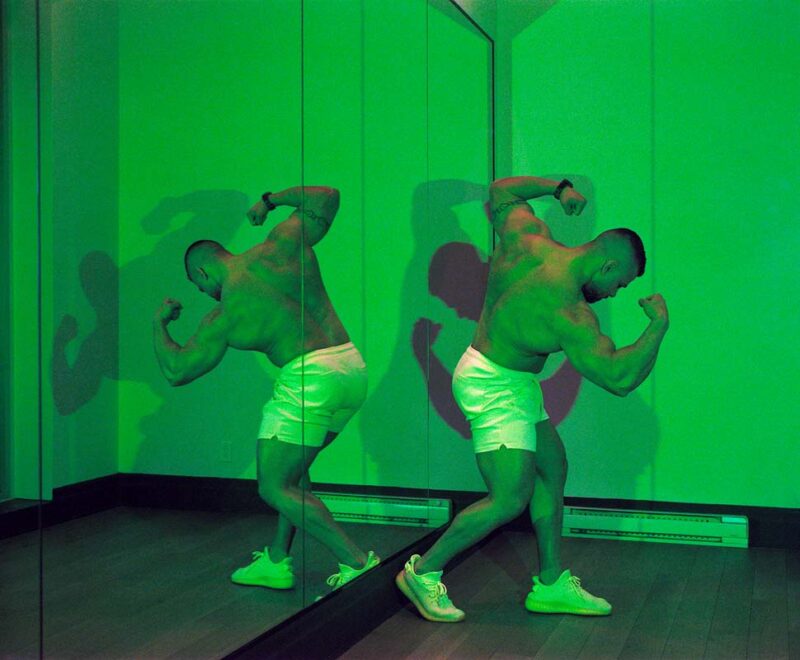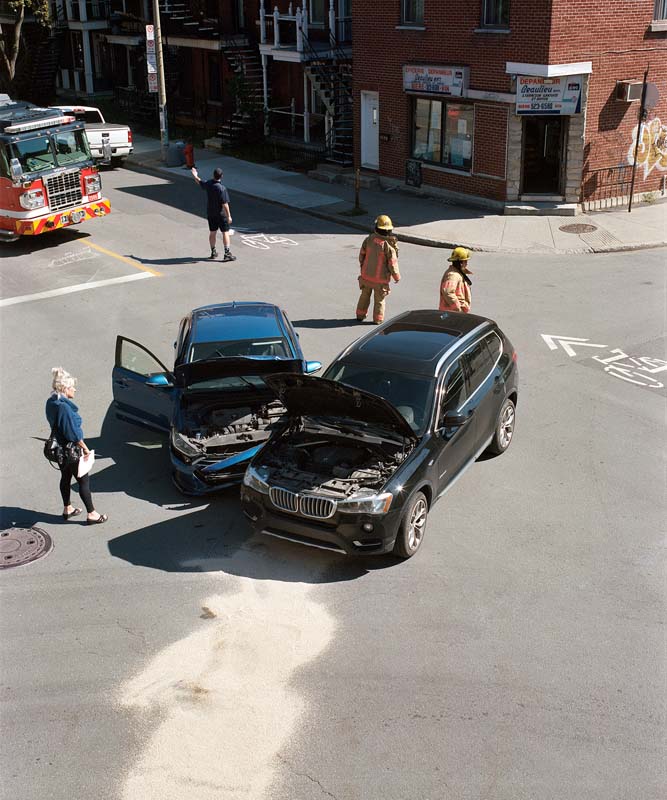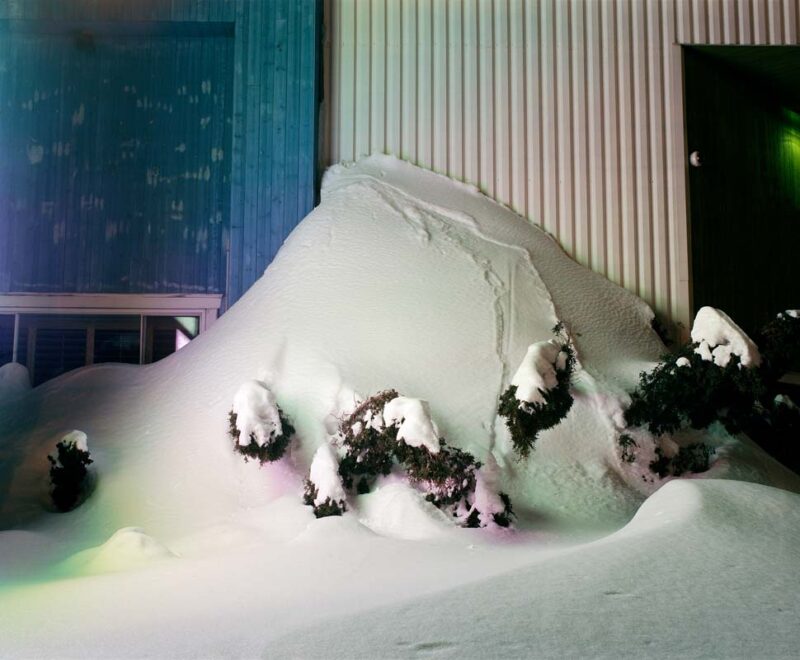[Summer 2024]
par Sylvain Campeau
[EXCERPT]
As I was beginning to write this review of Laurence Hervieux-Gosselin’s exhibition, the fact that she had won the Prix Lynne Cohen in 2021 suddenly came to mind. Beyond the importance and prestige attached to this award, in this case – more than in others – there seem to be similarities that connect Hervieux-Gosselin to the late Lynne Cohen, as they both open their images to narrative potential. But they do so in different ways.
We look at the images presented in Lune de craie, curated by Denis Rioux, in the light of Hervieux-Gosselin’s preceding series, Fly-On-The-Wall, presented in 2022 on the beach at Paspébiac for Rencontres de la photographie en Gaspésie. She had chosen to hang out backstage at the TV reality show Occupation Double, to capture scenes and participants in stills, rather than in filmed action. Against this narrative background she superimposed her own plot, composing a second, fictional story. But one couldn’t happen without the other. I expected something similar in Lune de craie, especially because this exhibition contains a sample of the previous series. In fact, like Fly-On-The-Wall, the images here do not offer a distanced portrait of a determined reality. Each invents, in a way, its own narrative setting toward which it extends, and from which it gives us not so much content as a simple idea. Each seems to linger – to be a pause within a fictional continuum about which we know nothing and can’t guess anything.
We might wonder how Hervieux-Gosselin was able to create this sense that we are seeing a frozen moment in a reality that must be continuing somewhere and whose essence, if not its entire plot, appears quite evident. We gain a little clarity when we learn that she is fond of analogue photography, which is her point of departure, and that she favours long poses. We tell ourselves, then, that this must be reflected in what she creates. Each image that she captures is inscribed on a negative – a small version with reversed tonalities – existing alongside another image, also a defined piece of suspended space-time. Placed in sequence on a film strip, they form fixed instants, bits of ersatz life. The resulting scene seems almost fated, containing a sort of underlying tension that makes us stop in front of it, as if waiting for the normal course of space-time to resume. Her cut monumentalizes the image, establishes the scene as a decisive event. We recognize here Henri Cartier-Bresson’s fascination with the decisive moment. Did he hunt it down? Or did he create it out of whole cloth through his own talent?
With Hervieux-Gosselin, the answer is not long in coming. It’s obvious that she creates it. Seizing the moment, she makes images by stopping time, bringing together all the narrative possibilities of a flow that will resume later. In the precursor frame that is the negative, between its edges punctuated with perforations prefiguring a sequence that doesn’t materialize, the scene is magnificently unstable. Nothing really happens, but something has happened or will happen, we’re sure of it. The lost interval before or after the epiphany, the luminous revelation, promises a fiction that lives beyond. How does she create this effect?
Sometimes, though, it’s evident. As we look at Everybody’s waiting for you (Dance Dance Revolution), which shows a sort of machine for dancing, we’re waiting for it to be activated, for someone to come along to let it fulfil its function. Another example (among others) is the image of a road mishap, with the appropriate title – Accident. Here, looking at the damage suffered in a car crash, there’s no doubt. We are no longer in the state of expecting an action to come, but in the aftershock of what has already occurred.
We must believe, however, that the secret resides in the choice of scene and moment, in an effect that has certainly been constructed. Something must be held back, kept enigmatic – a grouping of elements that makes time wait, that absorbs and concentrates an action to which the scene itself inevitably aspires. Something like a presumption of a presence to come, or that has already gone. Roseburg is an example of this. In front of a rocky hill, the corner of a motel offers two brightly lit doors. The colours are vivid, making the structure look almost like an artificial square block. Does someone live here? Will that person go in? Or come out?
We won’t know.
—
Sylvain Campeau contributes to many Canadian and European magazines. The author of seven poetry collections and several essays on the visual arts, he published Écrans motiles with Les Presses de l’Université de Montréal in 2022. As a curator, he has organized some forty exhibitions.
—
[ Complete issue, in print and digital version, available here: Ciel variable 126 – TRAJECTORIES ]
[ Complete article, in digital version, available here: Laurence Hervieux-Gosselin, Lune de craie — Sylvain Campeau
]




